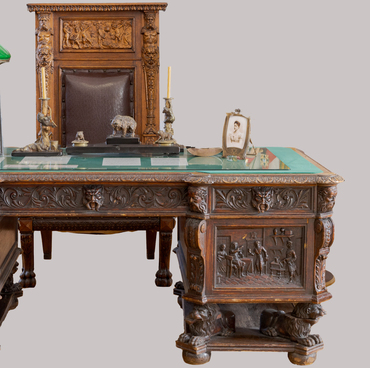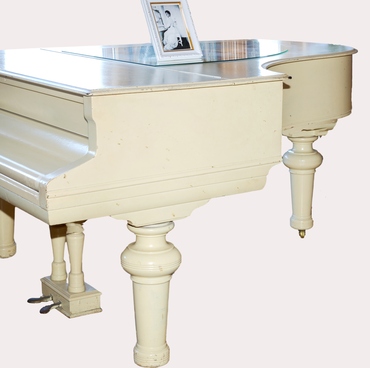The round base rests on four legs. The neck, body, base and handles are all decorated with relief carvings.
A samovar symbolized homey warmth and coziness and was an attribute of every family gathering. Historical documents first mentioned samovars in 1746; nevertheless, to say with certainty when and where the first samovar came to be is impossible. The way a samovar works nowadays and its design have remained the same since the late 18th century. The design of the first samovars, however, differed from that of the modern ones. Most often, samovars ranged in volume from 3 to 8 liters, although in some cases bigger, 12–15 liter samovars were made for large companies. The severe climate, reigning over most of Russia, prompted people to drink several cups of tea a day, and the heat coming from the samovar could warm up the room quite nicely. This could explain why, even with their high cost, samovars were so popular among the common people.
In the Russian Empire, samovars were produced in Tula, known as the “city of gunsmiths.” In the 19th century, the main factories were controlled by the “samovar kings” — the Lomovs, Batashevs, Teiles and Shemarins. Samovars made at these factories gained wide popularity.
By the late 19th century, Tula had over ten Batashev factories. The very first one was founded by Ivan Grigoryevich Batashev in 1825, while the largest one was opened in 1840. The charter of the “Association of steam samovar factory of Batashev’s heirs in Tula” was approved in 1898. A new factory was built in the late 19th century on Gryazevskaya Street in Tula. In the early 20th century, the factory of Batashev’s heirs produced 54 different types of samovars. The samovars of Batashev’s factory were held in great esteem. The renowned Batashev samovars, unparalleled in quality and decoration, were rapidly snapped up, bringing a large income to the factory.



